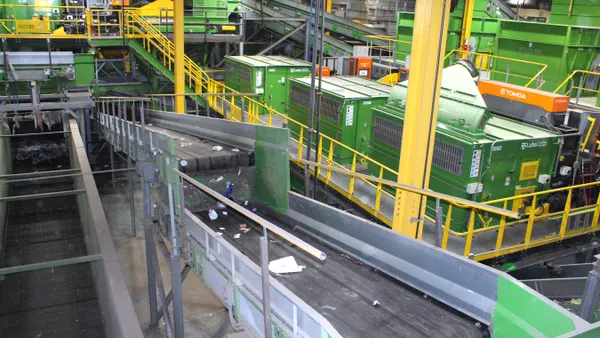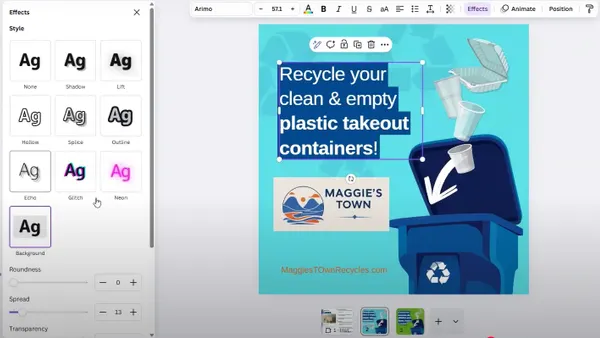Dive Brief:
- An estimated 54% of the region's glass was sent to secondary processors for cleaning in 2017, according to a new self-reported MRF survey by the Northeast Recycling Council (NERC). The second most common destination was sending glass to landfills as alternative daily cover (23.5%), followed by sending it to landfills for disposal (14.7%) and using the material in various types of aggregate applications (7.8%).
- NERC's survey also showed the MRFs with the lowest percentage of contaminated glass (in terms of non-glass residue and fines) were those that had recently made upgrades to their systems and/or took in material that was collected with source separation or dual-stream collection.
- Among the 46 MRFs that responded, 67% hadn't upgraded their facilities in the past three years and 65% do no additional cleaning of glass before shipping it off. Glass breakers, trommels, vibratory screens and vacuums were among the most common cleaning systems reported.
Dive Insight:
NERC contacted 91 MRFs in the northeast region from Maryland to Maine and heard back from 49%. While the survey results are illustrative, they cannot quite be called representative of the entire region — a fact NERC acknowledges early in the survey results.
The organization highlights the potential benefits of investing in additional cleaning equipment at the MRF level. Making those changes, ideally at the front of the line, are seen as one way to open up new end markets or keep more material out of landfills. Compared to other parts of the recycling stream, glass isn't always seen as worthy of similar investment by some. For example, only two respondents reported using optical sorters for their glass.
The relatively low-tech options many MRFs adhere to could be a result of what many respondents said were the biggest issues concerning glass recycling: wear and tear on machines, a lack of viable markets, contamination and cost. If glass recycling is seen as an expensive endeavor that beats up machines, it may be seen as a less appealing area to invest in.
The lack of accessible regional end markets plays a role in this sentiment. The abrupt closure of a Massachusetts bottling plant earlier this year has created what was previously described as a "domino effect" of related closures and changes in the region, including two Strategic Materials processing facilities.
However, Pace Glass, based in New Jersey, claims it can change this effect with a new $90 million facility set to open next year that will have processing capacity for up to 750,000 tons of MRF glass per year. Despite the regional headwinds, and skepticism from some more established competitors, Pace's investment is seen as a sign of new potential for glass both in the region and the country. Though at a time when investment is likely already going into new equipment to clean up the fiber stream, some MRFs are hesitant to invest in their glass capabilities too. Due to all of these regional economic factors, it appears that some communities and MRF operators will continue opting to send their glass to landfills until the market shifts.









